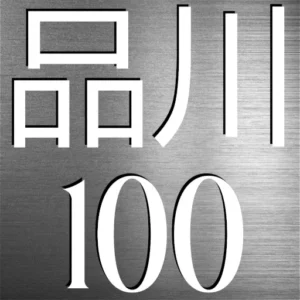What is it?
A Buddhist temple. Daitokuji school of the Rinzai sect of Buddhism. And the cemetery of a noble samurai family.
The Temple
Seikoin was founded by Hosokawa Yukitaka (細川行孝), the lord of Higo Kumamoto Domain (a branch domain of Kumamoto Domain) and his mother in 1650. It was originally located around the current Shinagawa Fire Station, but was moved to its current location during the Kanbun era (1661-1673) and became a subtemple of Tokai-ji . It became independent after the Meiji Restoration.
Designated Cultural Property: Okudaira family cemetery
The 598 square meter cemetery is surrounded by a tiled earthen wall and contains 89 gravestones from the two generations who died in 1614. The the Okudaira family was a fudai daimyo (feudal lord) and the lord of Nakatsu (Oita Prefecture). The Okudaira family was a hereditary daimyo under the Tokugawa shogunate. The 4th generation, Okudaira Masayoshi, established the family cemetery at Seikoin, and since then, successive lords have been buried there. The cemetery, surrounded by a tile-stacked earthen wall, is one of the largest daimyo cemeteries in Tokyo, with 89 tombstones, some of which exceed 3 meters.
The temple’s cemetery also houses the graves Nagai families. The Nagai family were the lords of Takatsuki domain in Settsu Province (now Osaka Prefecture), and from the 2nd generation, Naotoki, to the Showa era, the family heads and their wives have been buried there.
There are also graves of successive families of Noh performers, the Konparu and Okura In the garden, there is a monument to Sen no Rikyu, the founder of the Edo Senke school of tea ceremony, built by Kawakami Fuhaku.
🙏 Temple Notes
- Sect: Rinzai Zen (Daitoku-ji school)
- Principal Deity: Presumed Shaka Nyorai (historical records unclear)
- Founded: 1650 (by Hosokawa Yukitaka)
- Major Feature: Daimyō cemetery of the Okudaira and Nagai clans
- Cultural Role: Final resting place of Tokugawa fudai daimyō; only surviving Tōkai-ji sub-temple
- Special Feature: ~89 gorintō and tiled enclosures; designated historic site
🧭 Visitor Information
Address: 4 Chome-2-35 Minamishinagawa, Shinagawa City, Tokyo 140-0004
Best time to visit: Morning or late afternoon for quiet and light
Admission: Free
Where is it?
| what3words | ///tester.artist.vehicle |
| latitude longitude | 35.6153073 139.7361461 |
| Nearest station(s) | Shimbamba Station (Keikyū Line) |
| Nearest public conveniences | Two, on-premises western style. |
Show me a sign.

Yes. On the left as you approach the temple.
Withervee says…
From the street it looks like a typical small temple, but it just keeps going and going. The cemetery stretches deep into the block, and each step further in feels like stepping further back in time. The visual impact of those roughly 80 giant gorintō lined up in the back is, honestly, overwhelming.
Stone towers loom overhead, inscribed with centuries-old names – it’s hard not to feel tiny among them.
Despite the grandeur of the gravestones, the atmosphere is peaceful and intimate. Birds were chirping, and a couple of local ladies were quietly tending a grave, giving a polite nod as I passed. The garden is neatly kept, with hedges and a few flowering plants adding touches of color. I noticed how sunlight pours in (no skyscrapers around to cast shadows), illuminating even the far corners of the graveyard. In the late afternoon, the light made the stone monuments glow gently – a photographer’s delight, I’m sure. And the setting! We’re in a residential neighborhood; you literally have normal houses and apartment blocks bordering the temple. There’s something surreal about peeking over Seikōin’s wall from a side street and seeing a forest of stone pagodas inside. It’s like a secret world behind the walls.
One quirky thing that struck me: how rare this all is. I know how many Edo sites were wiped out or moved. Yet here I was, face to face with Edo-period daimyo graves in their original spot. You just don’t get to see this in Tokyo – not on this scale
I left Seikōin Temple feeling oddly moved. Maybe it was the contrast of life and death, old and new, all mixing quietly in a little corner of Shinagawa. Or maybe I just really like old rocks! Either way, this place made an impression. Withervee will be back – possibly around Halloween for that extra spooky vibe (kidding…mostly).”
Site Character
- Lifestyle 生活 (Seikatsu): ❌
- Historical Significance 歴史 (Rekishi): ✔️
- Atmosphere/Natural Features 風土 (Fūdo): ✔️
Who in their right mind would vote for this?
- Local (Rinzai) Buddhists
- Edo history buffs
- Stone monument geeks
- Graveyard whisperers
- Respectful wanderers
Further reading
links
While your there…
text about things to look at with or without links and or links to other pages

